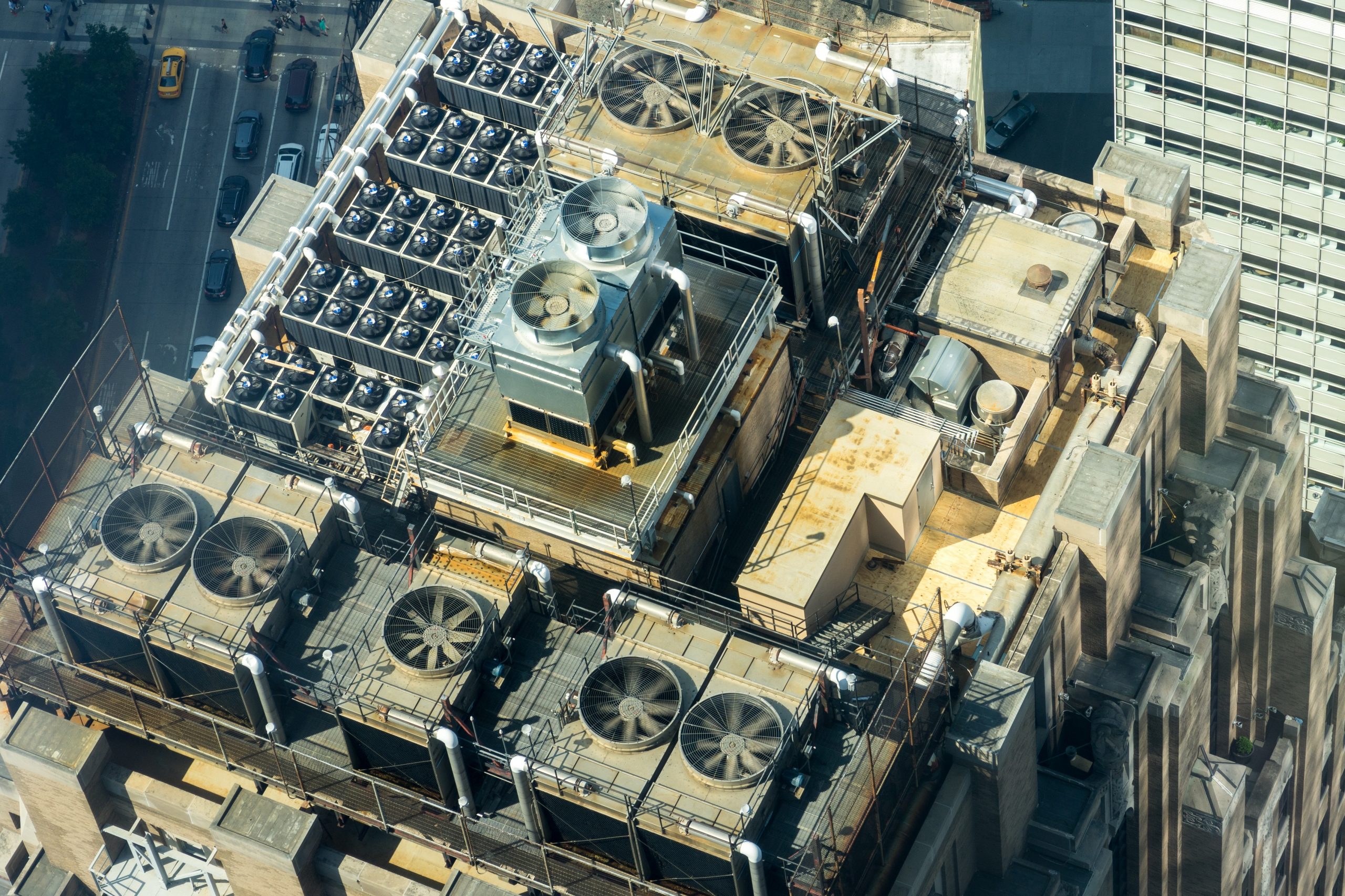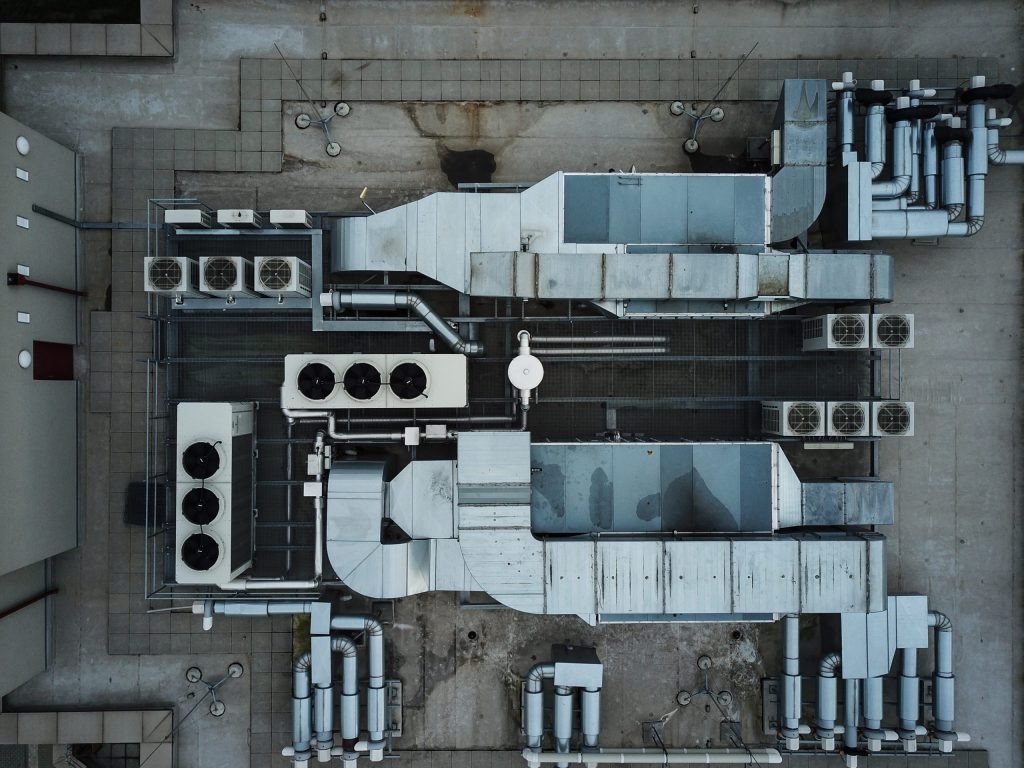In an era marked by environmental consciousness and sustainability, the integration of smart building automation systems has become a game-changer

Apart from serving costumes and managing staff, owners and facility owners of commercial buildings have an obligation to the structure and its components to keep it in good shape. For instance, failing to identify and maintain commercial HVAC systems can lead to loss of clients, tenants as well as income.
However, commercial HVAC systems are a bit more complicated than residential HVAC equipment. Luckily, in this article, we’ll take you through the basics of HVAC systems for commercial buildings to help you keep the repair costs and utility costs low.
That said, let’s get into it!

What are Commercial HVAC systems?
Commercial Heating, Ventilation & Air Conditioning (HVAC) systems have the same objective as residential HVAC equipment. That is; to keep the occupants comfortable and healthy by supplying them with high-quality air in a 72 deg F environment and maintaining the humidity level from 40 – 60%.
The heating is usually done through burning fuel like oil and gas or electricity. On the contrary, the indoor air is cooled with a process that extracts hot air and cools it via water-cooled or refrigerant systems, while removing the extra humidity.
In addition, commercial HVAC systems consist of ventilation systems. These systems draw in the necessary outdoor air, pass re-used indoor and outdoor air through filtration, and extract the contaminated air out of the buildings. This helps to prevent the spread of respiratory disease, and reduce odors and dilute gases such as carbon dioxide.

How commercial HVAC Systems work!
To control the indoor climate of a commercial building, there are 3 important things every HVAC system needs; controls, a distribution method, and a system that cools or warms the air. Generally, the cool and heated air flow through the same ducts and are controlled by the same thermostat. However, their sources tend to differ.
With that in mind, let’s look at these components one by one;
In most cases, when you activate the heating in a commercial HVAC system, the burner releases combustion gas into a heat exchanger that warms air passing through it. Heat pumps are sometimes used to transfer outdoor heat into the building. Air conditioning functions the same way as heat pumps, but in reverse, since they transfer indoor heat outdoors.
However, some commercial HVAC systems utilize a boiler to heat water and carry the hot water via pipes installed in the ceilings, floors, and walls.
MEP systems circulate air in commercial buildings through ventilation with the help of the principle that cool air falls and warm air rises. Moreover, there is a constant removal and induction of air that has been thermally altered in some instances.
To control a commercial HVAC system, you can use simple, programmable thermostats that send different cooling and heating requests throughout the day. Alternatively, the commercial HVAC design can comprise DDC (Direct Digital Controls), which are more advanced.
One benefit of using more advanced controls is that they’re reliable and ensure better energy efficiency. Advanced controls have a central computer that uses sensors to automate and monitor temperature schedules and lighting operations. However, staff can manually adjust and respond to settings from the main workstation, allowing the users to troubleshoot, get performance updates and perform maintenance. The only downside of Direct Digital Controls is that they’re more expensive because of their flexibility and sophistication.
All in all, both DDC and simple controls allow users to implement temperature setbacks that will help them save energy by about 5 – 20%. A temperature setback is a period programmed into the thermostat when no cooling or heating is needed, such as when the commercial building is empty or after the workday is over.
Unique Aspects of HVAC systems in commercial buildings
Commercial HVAC systems have more complex ventilation because of the larger size of the building. Moreover, commercial buildings have fewer windows per square footage than smaller residential facilities, making it difficult to get rid of stale air. For that reason, a commercial HVAC system features a designated mechanical ventilation system to ensure acceptable indoor air quality and fresh air intake.
HVAC units of commercial buildings such as packaged systems and all-in-on types can be located on the roof, beside the building, or in a utility room in the basement. The rooftop is the most commonly used location since it has ample space and offers a good noise barrier.
A commercial HVAC system ventilates and conditions a larger structure than a residential HVAC unit. As a result, its components are larger and feature a modular design. However, these components are located together for ease of maintenance and installation. In terms of size, modular rooftop HVAC units for commercial buildings are available in 10, 25, and 50-ton units. Moreover, their evaporators, dampers, blowers, condenser fans, and thermostats are more powerful.
HVAC systems for commercial buildings consist of several packaged units with separate thermostats to allow diverse indoor climates to coexist in one structure. This allows for complete customization by giving each area independence from other areas. Moreover, this will enable technicians to repair one zone at a time to reduce disruption.
Another unique aspect of commercial HVAC systems is that they use sensors and logic controllers to bring in cool outside air and flush out building heat. This helps to lower energy output, increase ventilation and reduce wear and tear on your HVAC equipment.
Conclusion
To sum up, HVAC systems for commercial buildings should be strong, durable, and feature complex systems of structures, connections, and moving parts. Hopefully, after going through this guide, you now have a basic understanding of commercial HVAC systems.
If you’re planning to install a commercial HVAC system in California, give Innodez Design & Engineering a call! Our team of experienced HVAC designers and engineers will help you create the best commercial HVAC design for your business!
About Author
InnoDez